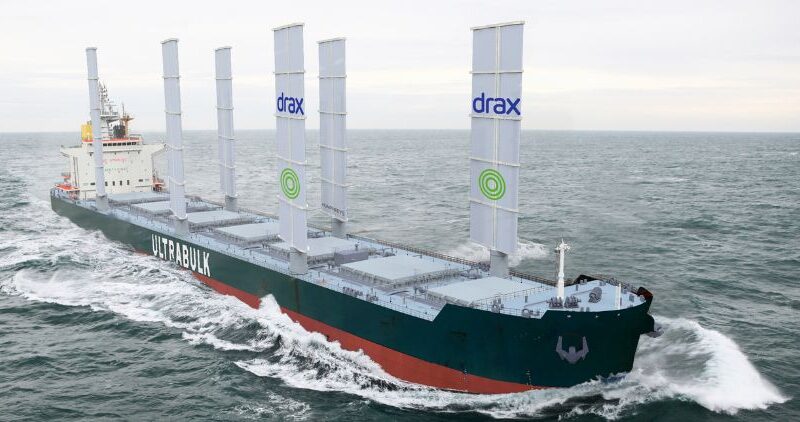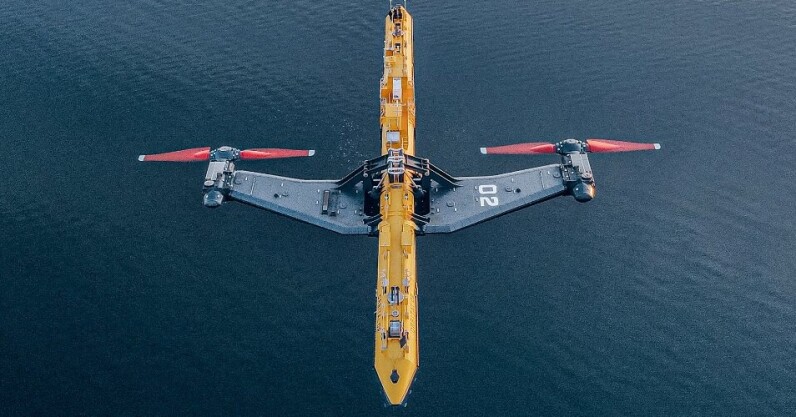Low-carbon energy startup wins Crown Agreement for 30MW tidal project
Fossil-free though it may be, hydropower comes with its specific set of challenges. It has a high initial cost, and can often be invasive and destructive to local communities and biodiversity. Furthermore, it will, in all likelihood, become increasingly susceptible to droughts. But what if we could harness the power of the oceans themselves?
This is what Scotland-based Orbital Marine Power is aiming to do with its 2MW+ O2. Its developers say it is the world’s most powerful tidal turbine under commercial operation and a result of 15 years of refinement.
Now, Orbital has just won an Option Agreement from Crown Estate Scotland for a new tidal energy project in the Westray Firth. This is an area of water in the Orkney islands where tidal speeds can reach over 3m/s.
Adding more tidal turbines to marine energy centre
The low-carbon energy startup has already deployed one unit of the O2 at the European Marine Energy Centre (EMEC), supplying energy to the UK grid since July, 2021. Following the award of contracts for difference (CfDs) – the UK government’s main mechanism for supporting low-carbon electricity generation – from allocation round 4 last year, it is getting ready to install a further three turbines.
Essentially, tidal turbines work the same way a wind turbine does, only it is streams of water that move them, not air. Orbital’s floating O2 platform is 243 feet long and placed in tidal streams and moored to the seabed via strong anchors that hold it in place. It is connected to the local electricity grid via a subsea cable.
Based on the company’s case studies using 3D modeling, FastRig installed on an Ultrabulk ship carrying biomass from Baton Rouge to Liverpool could save 20% of fuel every year.
Now, SGS is collaborating with the University of Southampton on a project called the Winds of Change, funded by the Department for Transport and Innovate UK in an effort to decarbonise the country’s maritime sector.
“While new wind-assist technologies are being developed, many are not ready for market and their predicted fuel savings have not been independently verified at sea, which is why UK-funded research projects like this are so important,” lead scientist Dr. Joseph Banks, from Southampton’s Marine and Maritime Institute, said in a statement.

As part of the two-year development programme, the university researchers will create new software tools that accurately predict how modern vessels perform on the ocean when retrofitted with SGS’s wing sails.
They will also test the impact of a retractable 20 metre-high FastRig fitted to a British 105 metre-long commercial vessel, the Pacific Grebe.
“This will require innovative numerical simulations backed up by experiments conducted in our highly instrumented 138 metre Boldrewood towing tank and RJ Mitchell wind tunnel,” Banks added.
Scientists from Southampton’s Marine and Maritime Institute hope their new tool, which predicts the fuel savings achieved by the wing-sails, will encourage further investment in the UK’s marine technology sector.
“It’s clear that shipping must rapidly reduce emissions in the short term,” SGS’s CEO Diane Gilpin said in a statement. “Wind power harnessed using sophisticated digital software and well-engineered equipment is at present the fastest way for the sector to reduce fuel consumption and related emissions.”
Sailing, reimagined: UK startup bets wind-powered ships will cut carbon emissions Read More »
